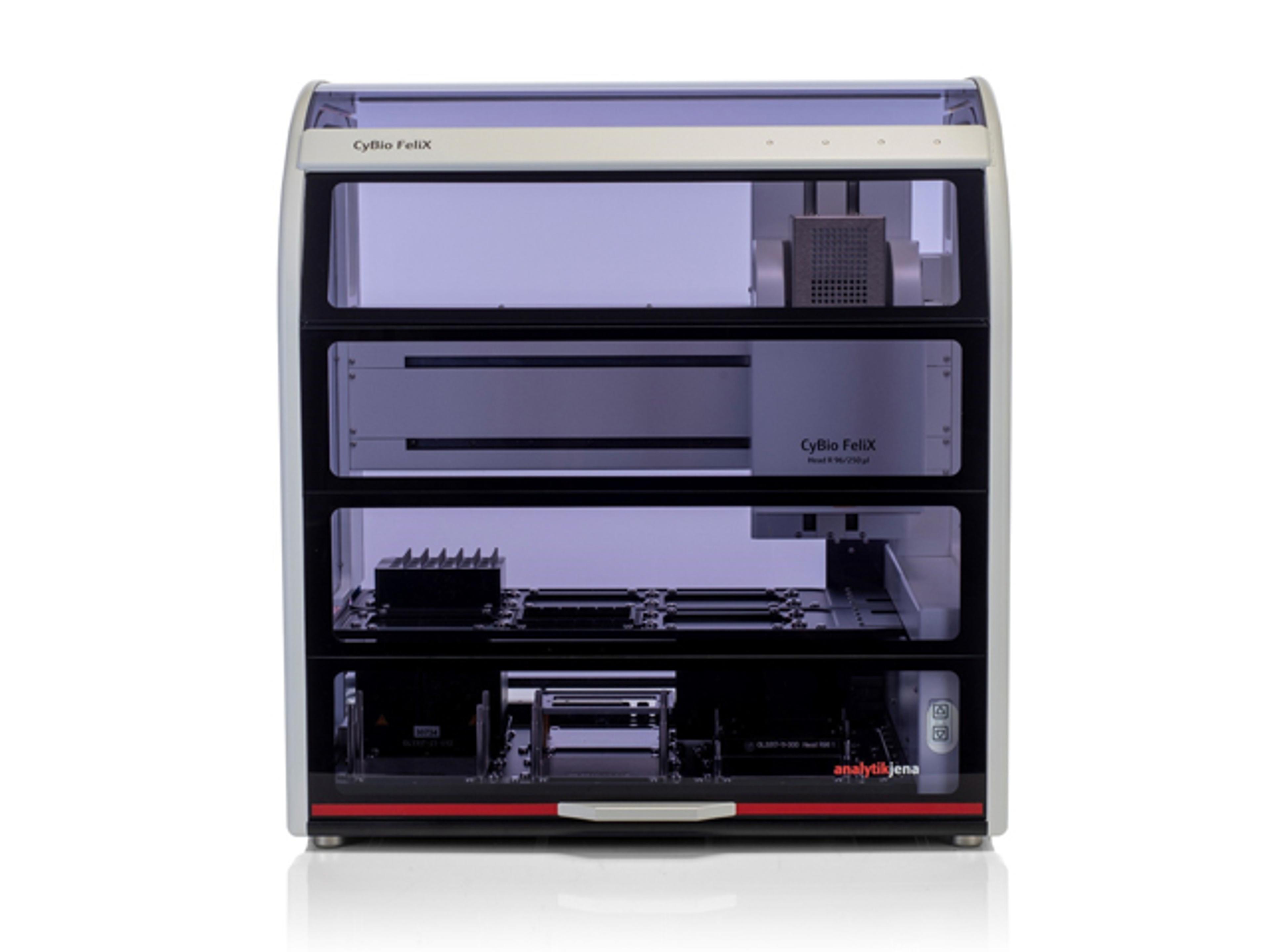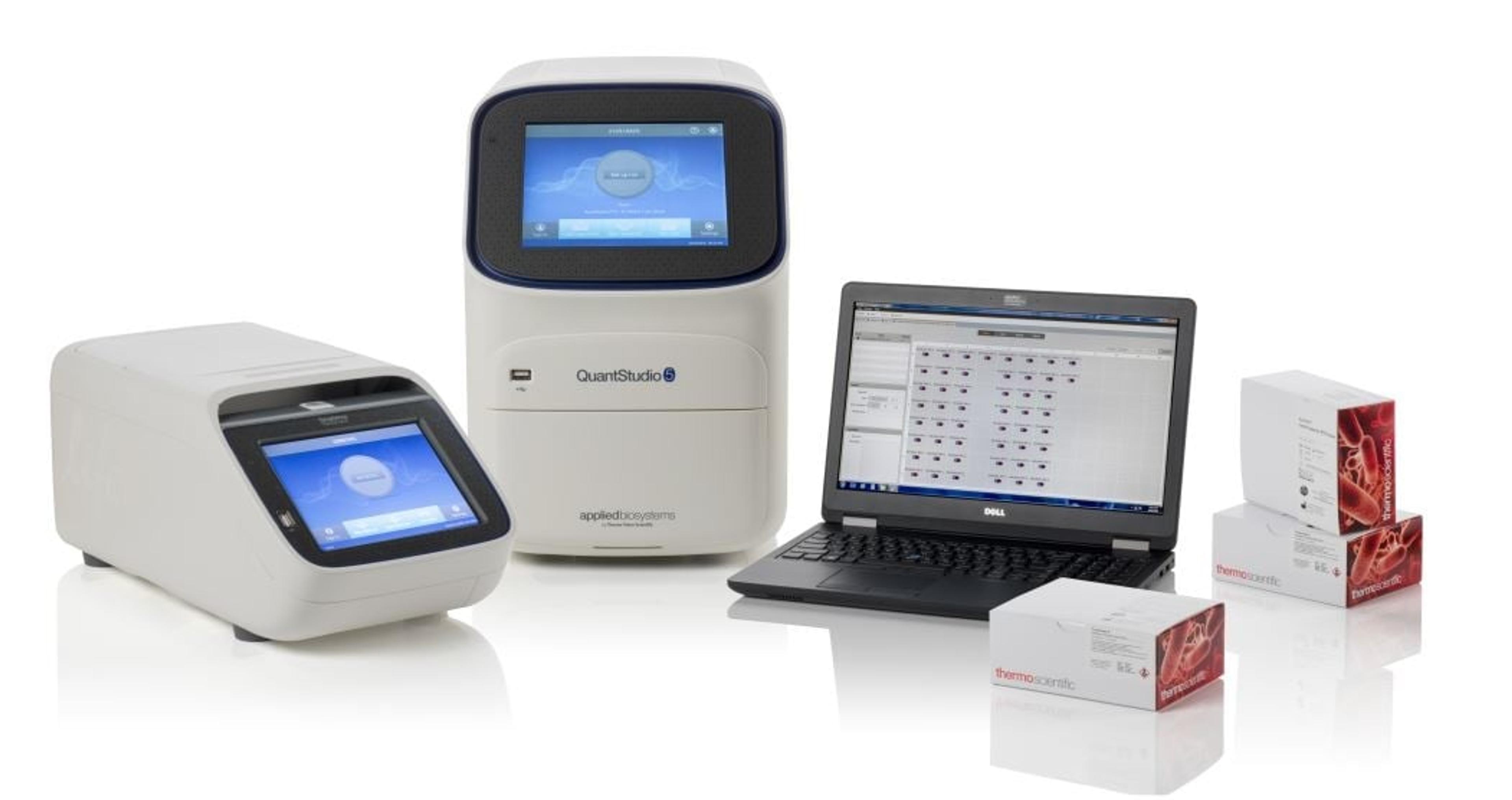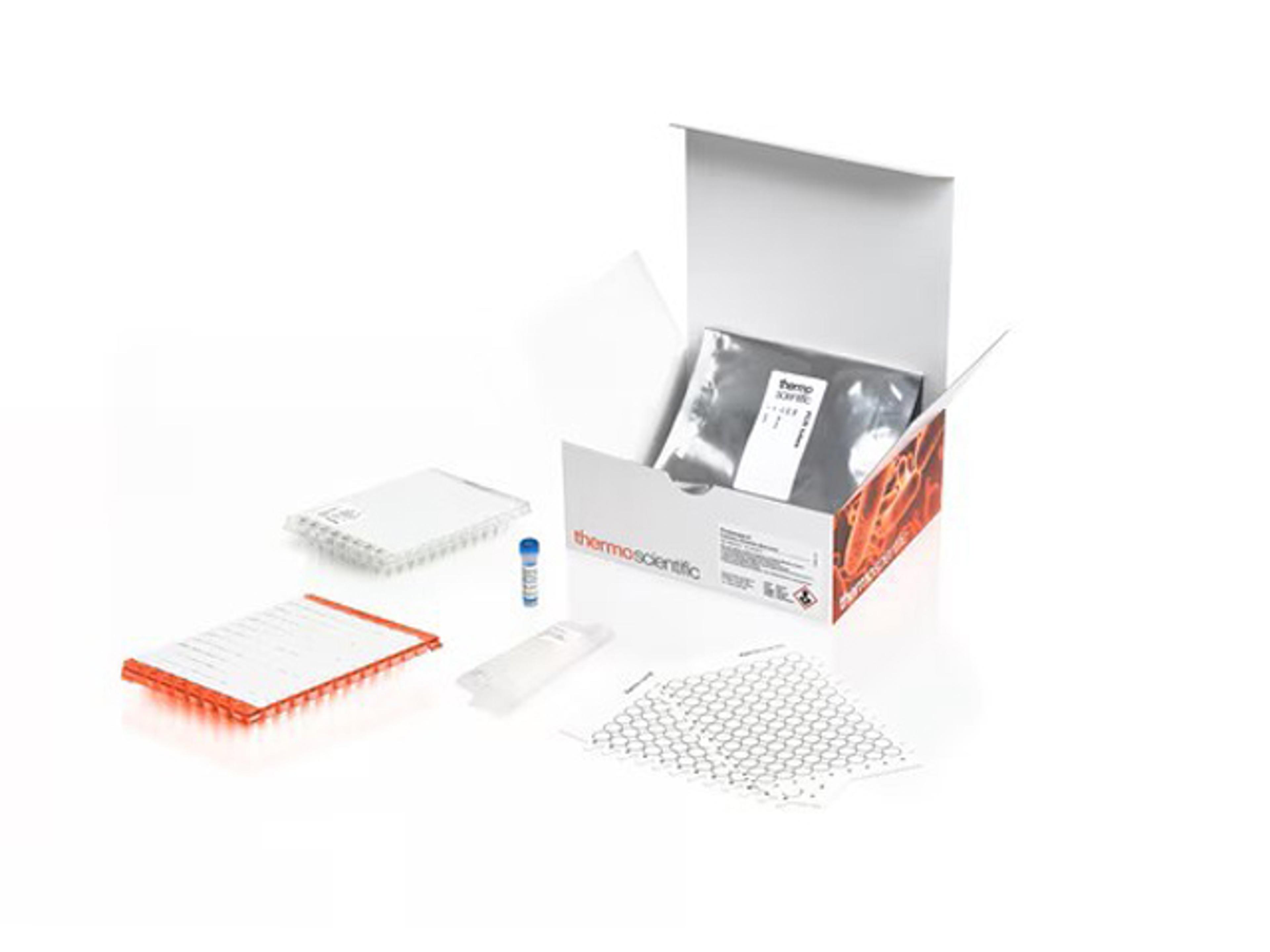How to adopt automation in food and beverage testing: A checklist for your lab
19 Nov 2025Higher throughput, fewer manual errors, more walk-away time – the rewards of automation are well recognized. Achieving them in practice, however, is often another story.
For many laboratories, the shift from manual to automated workflows is rarely as seamless a s expected. Even the most ‘plug-and-play’ instruments can present new challenges for staff, infrastructure, and day-to-day operations.

Explore the checklist below, design to help you plan, implement, and review your transition to automated PCR with clarity and confidence
The food and beverage testing sector is no exception. With constant pressure for faster turnaround times and growing demands on accuracy and compliance, automation has become an increasingly strategic investment. PCR workflows for detecting pathogens, allergens, and GMOs are among the strongest candidates for automation, but they also introduce unique considerations in setup, validation, and training.
If your lab is exploring this step, the checklist below highlights the key areas to evaluate, helping you plan, implement, and review your transition to automated PCR with clarity and confidence.
1. Define your goals
Identify the main challenges you want to solve
Before investing in automation, clarify your lab’s objectives. Are you introducing PCR technology for the first time, or expanding existing PCR testing services? Identify the specific challenges you want to solve, whether it is throughput, turnaround time, regulatory compliance, or reducing repetitive manual work.
Set clear measures of success
Set clear, measurable indicators of success such as turnaround time, error rate, cost per sample, or staff utilization. These metrics will help you evaluate performance and demonstrate the impact of automation to staff and stakeholders.
2. Map your current workflow
Highlight bottlenecks in sample preparation or PCR setup
Document your existing processes from sample receipt through to result reporting. Highlight bottlenecks in sample preparation, reagent handling, or PCR setup that automation could address. Review any existing HACCP plans and relevant national regulations. Consider key operational factors such as target organisms, testing frequency, required sensitivity, turnaround time, and available personnel. These will all help you assess whether automation offers a practical advantage for your laboratory.
Assess how your process handles peak sample loads or contamination events
It is also important to assess how your workflow responds under stress, such as during seasonal peaks, high sample volumes, or contamination events. Some labs find that while routine analysis can be done manually, throughput becomes a challenge during contamination events. Understanding these pain points will clarify where automation can deliver the greatest value.
While our routine analysis could be done manually, the number of samples increases substantially during contamination events, making manual handling challenging. Automation allows us to smoothly handle a sudden increase in tests.
Raul Mesa Quality and Food Safety Manager for Coca Cola Europacific Partners
3. Establish key requirements
Define the core requirements your automated PCR system must meet:
Sample volumes
Estimate both routine and surge testing capacity, considering the expected volume and frequency of samples.
Assays required
Identify target organisms and matrices (e.g., meat, dairy produce, beverages). The Thermo Scientific™ SureTect™ PCR System is validated for a broad range of targets and matrices, from raw meat and seafood to dairy, infant formula, and rinse water.
Available lab space and infrastructure
Ensure that the selected lab has sufficient space to accommodate the system and any additional equipment. Assess the area has proper ventilation and separation from potentially hazardous materials. Some automation platforms are designed with smaller footprints to minimize space constraints. Also ensure your lab can accommodate the system’s power requirements.
Connectivity to data systems
Will the system integrate with your data environment, including laboratory information management systems (LIMS) or other digital platforms?
Regulatory standards
Confirm that systems and assays meet standards such as ISO 17025, AOAC, or ISO guidelines for food testing laboratories. ThermoFisher SureTect assays are AOAC-PTM, MicroVal, and AFNOR validated, compliant with ISO 16140, and support GFSI, HACCP, FSMA, and BRCGS compliance.
Traceability
Does the system automatically generate log files after each run? Can results be linked to specific samples, instruments, reagents, and operators? This is essential for any troubleshooting and for maintaining quality control and compliance with regulatory standards.
Customization
Assess whether the system can accommodate your desired customization needs, such as the ability to optimize pipetting height or adopt new assays. Some systems may have predefined protocols and workflows that cannot be easily modified or tailored to specific assay requirements. Selecting a solution that includes both instrumentation and a comprehensive assay menu can provide greater flexibility.
4. Evaluate potential solutions
Read reviews
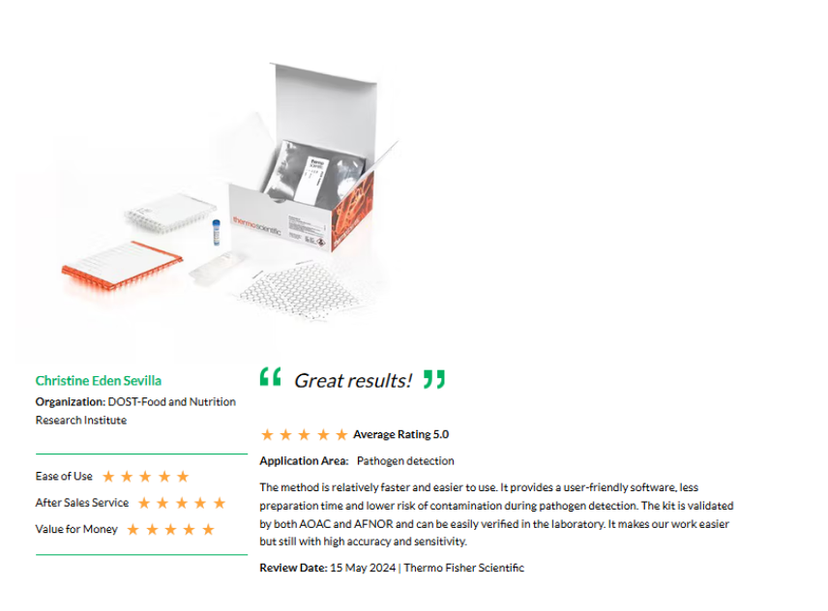
A featured SelectScience review on the Thermo Scientific™ SureTect™ Salmonella species PCR Assay
Take time to read peer reviews and independent user feedback. Insights from other laboratory professionals about system performance, usability, reliability, and after-sales support can be invaluable.
Engage those who will use the system
When assessing automation platforms, involve the people who will use them daily: technicians, analysts, and quality officers. Their insights on usability and workflow fit are critical.
Consumables
Have the consumables and reagents been designed with the end user in mind and will it help your team achieve results more efficiently?
Ease of use
Does it offer a user-friendly interface with pre-programmed runs and minimal specialist training? Does the software interface guide users to select the appropriate channel pipetting with minimal risk of human error. Are PCR results automatically interpreted?
Staff training
Does the manufacturer provide onboarding, validation assistance, refresher sessions, or online resources?
Scalability
Can the system handle future assay expansion and higher throughput? For example, the CyBio™ FeliX Instrument – a part of Thermo Fisher’s SureTect™ Automation Workflow – offers interchangeable pipetting heads: the CHOICE head for simultaneous 8-sample processing and the Head R 96 for full 96-sample throughput. This flexibility allows laboratories to scale capacity seamlessly as testing demands increase.
Maintenance
Review service contracts, warranties, and local technical support options. Automated systems, while reliable, can require specialized maintenance and occasional troubleshooting. Strong support agreements can provide access to regular maintenance and repair services, minimizing downtime and protecting productivity.
5. Run a trial or pilot
Trial automation alongside your existing process
A pilot phase helps you validate both technical and practical performance before full rollout. Run a controlled trial of the automated PCR system alongside your current workflow. How fast are the PCR results? What is the error rate? How reproducible are the results?
Stress test
During the pilot, subject the system to stress testing, for example, challenging it with high sample volumes or potential cross-contamination scenarios.
Collect user feedback
During the trial, gather user feedback on ease of use, workload impact, and integration with existing processes. This is also the ideal time to build staff confidence. Allow technicians to learn through experience, troubleshooting, making mistakes, and understanding system behavior. Building familiarity is key to long-term success.
6. Validate and document
Compare automated vs manual results side by side
Compare automated versus manual results for accuracy, precision, and sensitivity to confirm equivalence or improvement.
Document performance data for accreditation and audits
Document all validation data, calibration records, and performance checks thoroughly – these will support accreditation audits and quality management reviews.
Update SOPs and quality documentation
Update your standard operating procedures (SOPs), risk assessments, and quality documentation to reflect the new process.
7. Review outcomes and scale
Confirm reductions in hands-on time, human error, and overall turnaround
Once the system is running, evaluate its impact using your original success metrics.
Assess ROI
Evaluate overall return on investment, considering both operational savings and staff redeployment to higher-value tasks. The volume and frequency of testing will also influence the ongoing cost of repairs and servicing.
Plan extension of automation to new assays, sites, or workflows
Use these insights to plan for expansion – whether by automating additional assays, integrating new matrices, or scaling to multiple sites. Continuous review will help ensure your automation investment remains aligned with evolving business needs and regulatory demands.
Meet the SureTect™ Automation Workflow
For food and beverage testing labs looking to make the shift to automated PCR, the Thermo Scientific™ SureTect™ Automation Workflow delivers fast, accurate, and fully validated solution. Using the CyBio™ FeliX Instrument, laboratories can automate lysis and PCR setup in just minutes, reducing hands-on time and improving reproducibility.
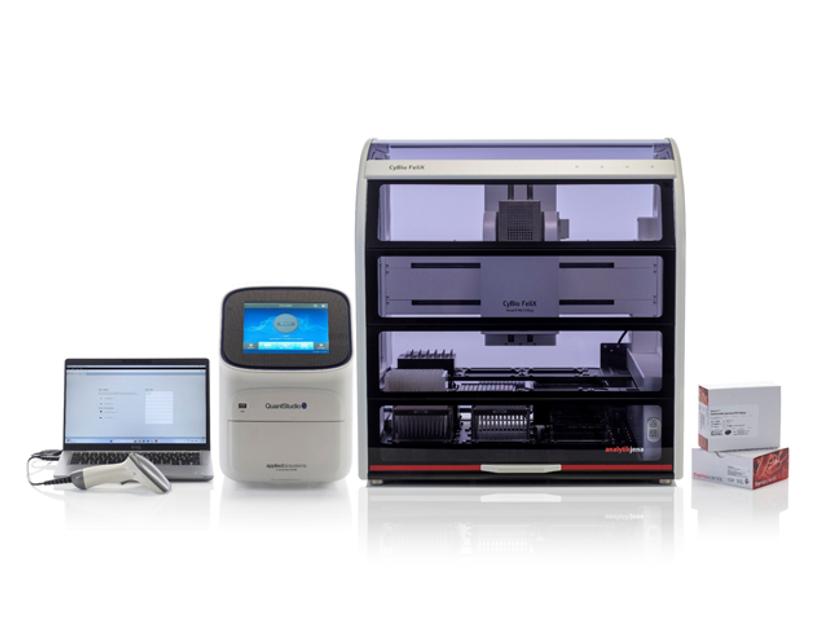
Enhance your laboratory productivity and performance with the Thermo Scientific™ SureTect™ Automation Platform, utilizing the CyBio™ FeliX Instrument,
The system supports up to six assays and 96 samples per run, with flexible options to automate part or all of the workflow. Precision pipetting minimizes human error, while barcoded traceability ensures full compliance.
Fully validated by AFNOR (according to ISO 16140-2:2016) and the AOAC for use with all SureTect Pathogen PCR assays, the SureTect system integrates seamlessly with the QuantStudio™ 5 Food Safety PCR System for rapid, walk-away testing across a wide range of food matrices. Backed by Thermo Fisher’s global support, it offers a reliable, scalable solution for today’s high-throughput food and beverage testing labs.
Download this brochure to learn more about the SureTect™ Automation Workflow and discover how a team at Coca-Cola Europacific Partners is already benefiting from its use for the rapid detection of spoilage contamination, in this case study.
Plus, register for this exclusive webinar to hear from microbiology experts, Katharine Evans, François Le Nestour and Dr. Salman Zeitouni as as they discuss how labs can design and validate testing protocols that go beyond minimum regulatory requirements, ensuring continuity when regulations change.

